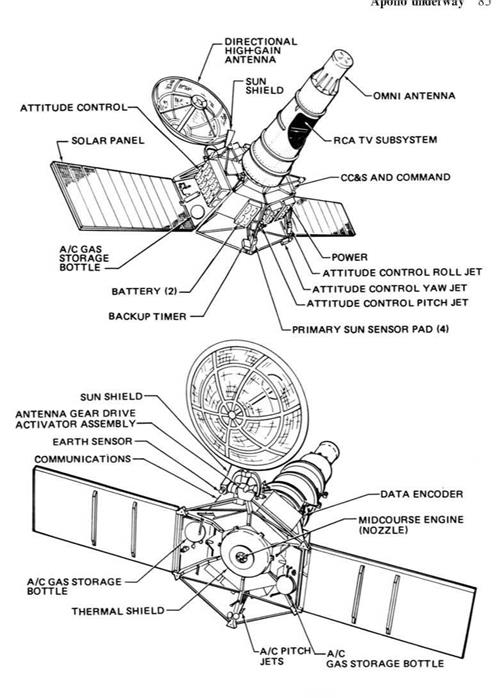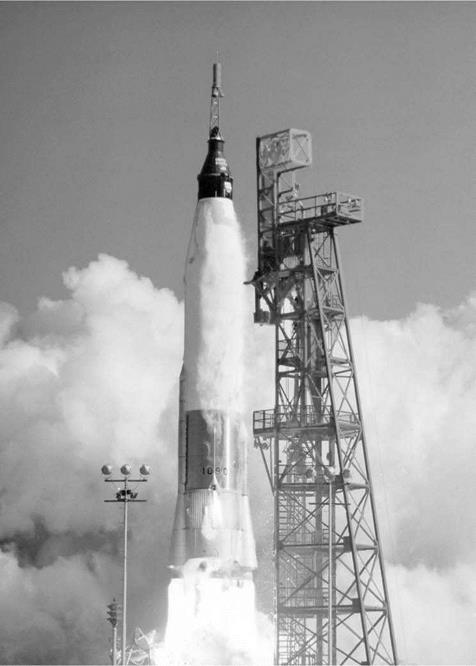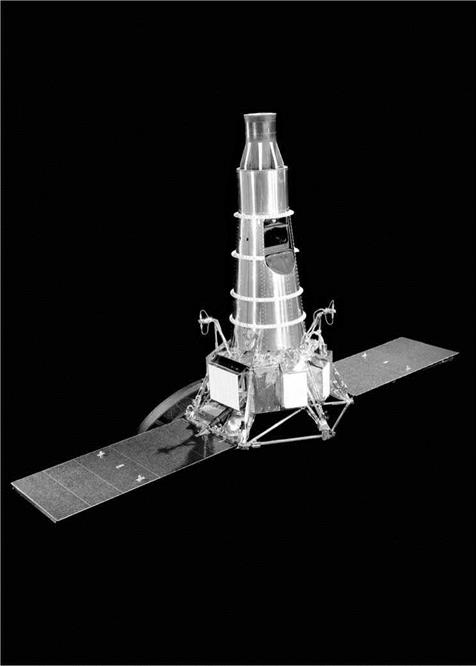APOLLO UNDERWAY
On 24 September 1961 NASA announced that the Manned Spacecraft Center to be built near Houston, Texas, would supersede the Space Task Group. It would not only design, develop, evaluate and test manned spacecraft, but also train astronauts and manage mission operations. Robert R. Gilruth, head of the Space Task Group, was made Director of this new centre.
On 1 November, NASA restructured its headquarters. As part of this review, the offices of Space Flight Programs and Launch Vehicle Programs were wrapped up, and new program offices were created for Manned Space Flight, Space Sciences, and Applications. This raised Manned Space Flight to office status, as opposed to a subdivision of Space Flight Programs. The effect was to put the administration of all the agency’s activities (some of which were aeronautical) on a par with the Office of Manned Space Flight, although that office had fully three-quarters of the budget. In effect, James Webb had gathered the power of decision-making into headquarters, since the directors of all the ‘offices’ and ‘centres’ would report to Robert Seamans, the Associate Administrator who, as the agency’s ‘general manager’, would have budgetary control.
The obvious candidates to be Director of the Office of Manned Space Flight were Abe Silverstein and Wernher von Braun, but because their relationship was stormy Webb had sought an outsider, and on 21 September hired Dyer Brainerd Holmes. As general manager of the Major Defense Systems Division of the Radio Corporation
Specifically, the cameras were designated Fa (25-mm), Fb (76-mm), P1/P2 (76-mm) and P3/P4 (25-mm).
|
|
|
|

|
|

|
of America, Holmes had built the Ballistic Missile Early Warning System on time and on budget, which was no mean feat.7 Silverstein returned to the Lewis Research Center, this time as its Director.
Homer Newell was promoted from Silverstein’s deputy to become Director of the Office of Space Sciences. Edgar Cortright became Newell’s deputy, and Oran Nicks superseded Cortright as Director of the Lunar and Planetary Programs Division. As one of his first acts, Nicks established individual offices in the Lunar and Planetary Programs Division for Ranger and Surveyor, and also for the Mariner interplanetary program. For Ranger, William Cunningham was Program Chief, Walter Jakobow – ski was Program Engineer and Charles Sonett served in an interim capacity as Program Scientist. James Burke at JPL was delighted with this structure, because it integrated engineering and science in a single program office and greatly simplified his relationship with NASA headquarters.
Holmes promptly assigned Joseph F. Shea, a systems engineer who had run the development of the inertial guidance system for the Titan intercontinental-range ballistic missile, to resolve the protracted debate about how Apollo would fly to the Moon – the ‘mission mode’ issue.
On 28 November, NASA announced that North American Aviation of Downey, California, had been awarded the contract to develop the Apollo spacecraft. On 21 December, Holmes set up the Manned Space Flight Management Council. Drawing on senior managers at headquarters and the field centres, this would set policy for manned space planning. At its first meeting, the Council decided on a launch vehicle which would become known as the Saturn V. A single launch would be capable of dispatching an Apollo circumlunar mission. It might even be possible to undertake a lunar landing with a single launch. A landing mission involving Earth orbit rendezvous could certainly be done using just two launches.
On 20 February 1962, America finally inserted a man into orbit, with John Glenn riding an Atlas missile to circle the globe three times. On 7 June NASA decided on lunar orbit rendezvous as the mode for Apollo. On 7 November, it announced that the Grumman Aircraft Engineering Corporation of Bethpage, New York, had been awarded the contract to develop the Apollo lunar module.
By the end of 1962, therefore, NASA had taken all the key decisions that defined how it would address Kennedy’s challenge.
BMEWS used large radar stations in Alaska, Greenland and England to provide the US with the famous ‘‘fifteen minute’’ warning of a Soviet ICBM strike over the north pole.











